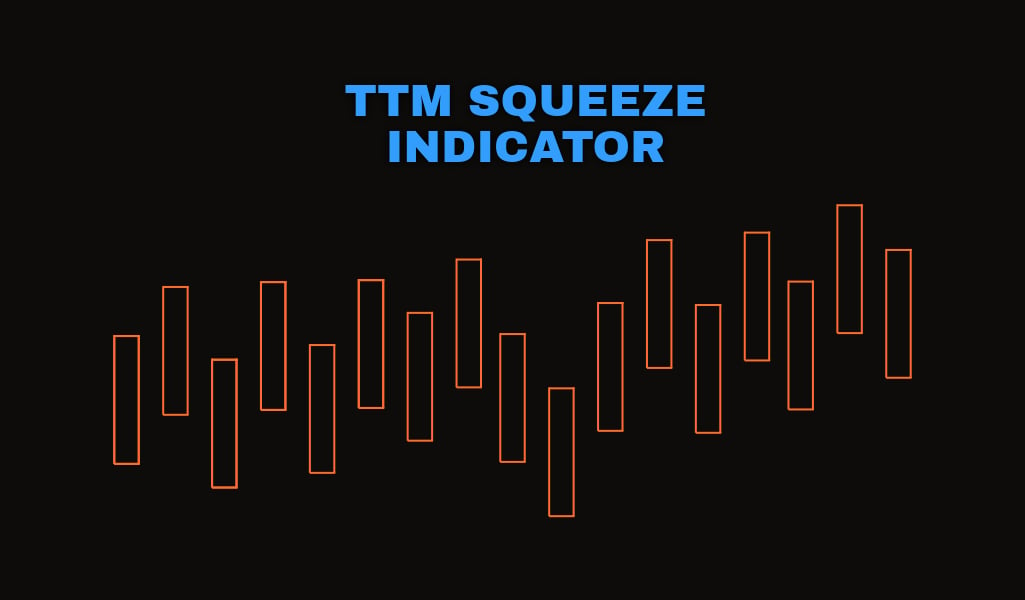
Mastering Volatility with TTM Squeeze Indicator
Volatility in the financial markets often spells opportunity for savvy traders. A powerful tool in navigating these uncertain waters is the TTM Squeeze Indicator, developed by renowned trader John Carter.
This tool has revolutionized the way traders approach markets, especially in options trading. It blends various technical analysis components, including Bollinger Bands, Keltner Channels, and a unique momentum oscillator, to identify market trends and potential breakouts. Let’s dive deep into understanding and mastering the TTM Squeeze Indicator.
What is TTM Squeeze?
The TTM Squeeze Indicator helps identify when the market is consolidating and when it might break out. It works by saying that when the market is calm, it is likely to become more active later on.
The TTM Squeeze Indicator is a useful tool for traders. It helps them find the best time for a volatility breakout and select the right options trading strategy.
Mastering the TTM Squeeze Indicator involves understanding its components, interpreting its signals accurately, and applying this knowledge to various trading scenarios. Using this indicator helps traders confidently and accurately deal with market volatility, turning challenges into profitable chances.
Components of the TTM Squeeze Indicator to Calculate
The TTM Squeeze Indicator is generally displayed as bars and dots, making it easy to understand. These visual cues help traders identify whether the market is trending or consolidating.
You’ll usually see red and green dots – red indicating market compression and green signaling potential breakouts. These visual elements make the TTM Squeeze a favorite among traders for its simplicity and effectiveness.
The TTM Squeeze Indicator combines several technical analysis tools. Bollinger Bands and Keltner Channels work in tandem to measure market volatility.
The Bollinger Bands, typically two standard deviations from the moving average, indicate market volatility levels – wider bands suggest higher volatility.
Keltner Channels, which rely on the average true range to set their boundaries, provide a volatility baseline. When Bollinger Bands are inside Keltner Channels, it indicates low volatility, which may lead to a volatility breakout.
Another vital component is the Momentum Oscillator, an advanced tool showing the direction of the potential breakout. This histogram fluctuates around a zero line, helping traders decipher whether to adopt a bullish or bearish stance.
Interpretation of TTM Squeeze Indicator
Interpreting the TTM Squeeze Indicator requires understanding its two core elements: the squeeze (volatility) and momentum (direction).
Volatility Indicator
The primary role of the TTM Squeeze is to identify periods of low volatility, where the market is consolidating. During these periods, the indicator shows red dots. A shift to green dots indicates an end to the consolidation and the potential beginning of a new trend or breakout.
Momentum histogram
This momentum histogram or oscillator adds an extra layer of analysis. It forecasts the breakout’s direction. Bars above zero line mean bullish, while bars below mean bearish. The color coding of the bars – transitioning from dark to light – further aids in identifying the momentum’s strength.
Trading Breakouts and Consolidation Patterns
By combining these two elements, traders can confidently identify the best moments to enter or exit trades. In low volatility setups, as indicated by the squeeze, traders anticipate a significant move. The momentum histogram helps determine the move’s direction. It enables strategies like bullish options, call vertical spreads, and put vertical spreads.
Technical Analysis and Multi-Timeframe Analysis
The TTM Squeeze Indicator helps day traders and long-term investors in different timeframes. It gives a full market view, aiding in better decision-making. By looking at the indicator on different timeframes, traders get a complete view of the market, helping them make better decisions.
Options Trading Strategies
For options traders, understanding the delta (options sensitivity) and intrinsic value becomes crucial. The TTM Squeeze helps in identifying the right moments for entering in-the-money (ITM) or at-the-money (ATM) trades, maximizing the potential for premium decay in favor of the trader.
Entry and Exit Points
The TTM Squeeze Indicator helps with knowing when to enter and exit the market. The color change of the histogram bars shows when to close positions for more profit or less loss.
When Can You Use It?
The squeeze can be used on any time frame, on any chart. The key to using it, is just understanding that once the squeeze fires, it usually lasts 8-10 bars.
For example, if the squeeze is on a _ chart, the move will last approximately _.
- 5-minute chart: 5 minutes x 8 = 40 minutes.
- 30-minute chart: 30 minutes x 8 = 240 minutes
- Daily chart: 8-10 days
- Weekly Chart: 8-10 weeks
- Monthly Chart: 8-10 weeks
TTM Squeeze and Divergence Trading
Trading with the TTM Squeeze indicator often involves leveraging divergence. This occurs when the histogram bars either move towards or away from the “zero line.” The price, on the other hand, moves in the opposite direction.
Bearish divergence happens when the price goes up. But the histogram’s positive slope on the “zero line” goes down. The price makes higher highs, but the histogram shows lower highs.
Bullish divergence occurs when the price goes down but the histogram moves up towards the “zero line” from the negative side.
When should you execute the trade? Different traders have different strategies. Traders have different strategies. Some enter trades when a trend line is broken. Others wait for the trend line to be retested after it is broken. Some use additional indicators like moving averages for confirmation. Ultimately, the key lies in pre-defining the risk before entering the trade.
TTM Squeeze Paired with Moving Averages
Like any technical indicator, the TTM Squeeze is not a standalone solution and works best when combined with other indicators for confirming price direction and momentum. Opinions vary on which moving averages to use, but a combination of short, medium, and long periods generally provides a comprehensive view of the trend’s strength and direction.
To use moving averages with the TTM Squeeze indicator, you need to identify instances when the price deviates from the averages. This is accompanied by a squeeze, which is indicated by a red dot turning green.
The price usually goes back to its average over time, especially when it moves far away. The histogram can show when the price has gone too far. When it peaks and begins to reverse, watch for similar movements in the moving averages.
Bottom Line
Understanding the TTM Squeezer, a brainchild of John Carter and a key offering of Simpler Trading, revolves around mastering its dynamic components.
When the squeeze fires, it signals a significant shift in market conditions. The momentum oscillator, with its visually intuitive light blue and dark blue histogram bars, plays a crucial role in this process.
These bars, fluctuating based on standard deviation, form an essential component of the TTM Squeeze, offering clear insights into market momentum.
The TTM Squeeze histogram, with its distinctive red and green dots, further demystifies market trends by illustrating the volatility component effectively. These dots indicate whether the market is building up energy for a significant move as the bands narrow, signaling a potential breakout or reversal.
Understanding how to read the TTM Squeeze across different time frames empowers traders to make informed decisions, especially when the squeeze has fired, heralding a potential shift in market dynamics.





